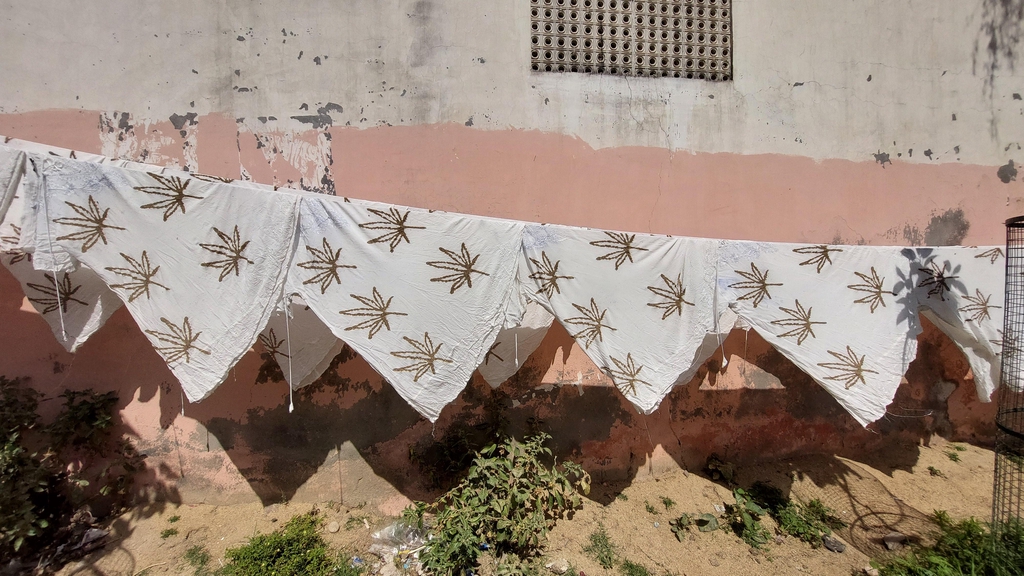Traditional Artisanal Techniques
Indian blockprinting is a fabric printing technique using hand-carved wooden blocks that has been handed down through generations. It needs extreme precision and patience. The motif is hand carved onto a wooden block about 25 cm long. The block is dipped in the dye and then applied to the fabric as many times as necessary to cover it, taking care to align the motif each time. This is repeated for each colour, one after the other, with a different block. The fabric is then rinsed to fix the colours and laid out to dry in the scorching Rajasthani sun.
For Dabu blockprinting, or mud-printing, the block is covered with a black clay mixture which stops the colour from reaching the fabric, it is then dipped into vats of natural dyes often using indigo, pomegranate and madder as natural colourants. Exact colours are rarely replicated; making each fabric colour unique. Sometimes the fabric is then block printed with natural dyes creating a beautiful, unique work of art.
Kantha is traditional embroidery using a simple running stitch. Originally from West Bengal and Bangladesh, this ancient artisanal technique was often used to make bed covers from old fabric such as cotton saris.
Suzani hand embroidery techniques have been passed down through generations. Inspired by the traditional textile art of central Asia, each motif symbolises nature, protection and beauty.
Indian cutwork involves carefully hand-cutting fabric to create decorative patterns – often geometrical or floral – and then hand-sewing the cut edges to make beautiful soft furnishings. Real cutwork articles are rare, they come from the agricultural villages of Rajasthan and are only made during the short non-farming season, each piece is authentic and limited in production.

